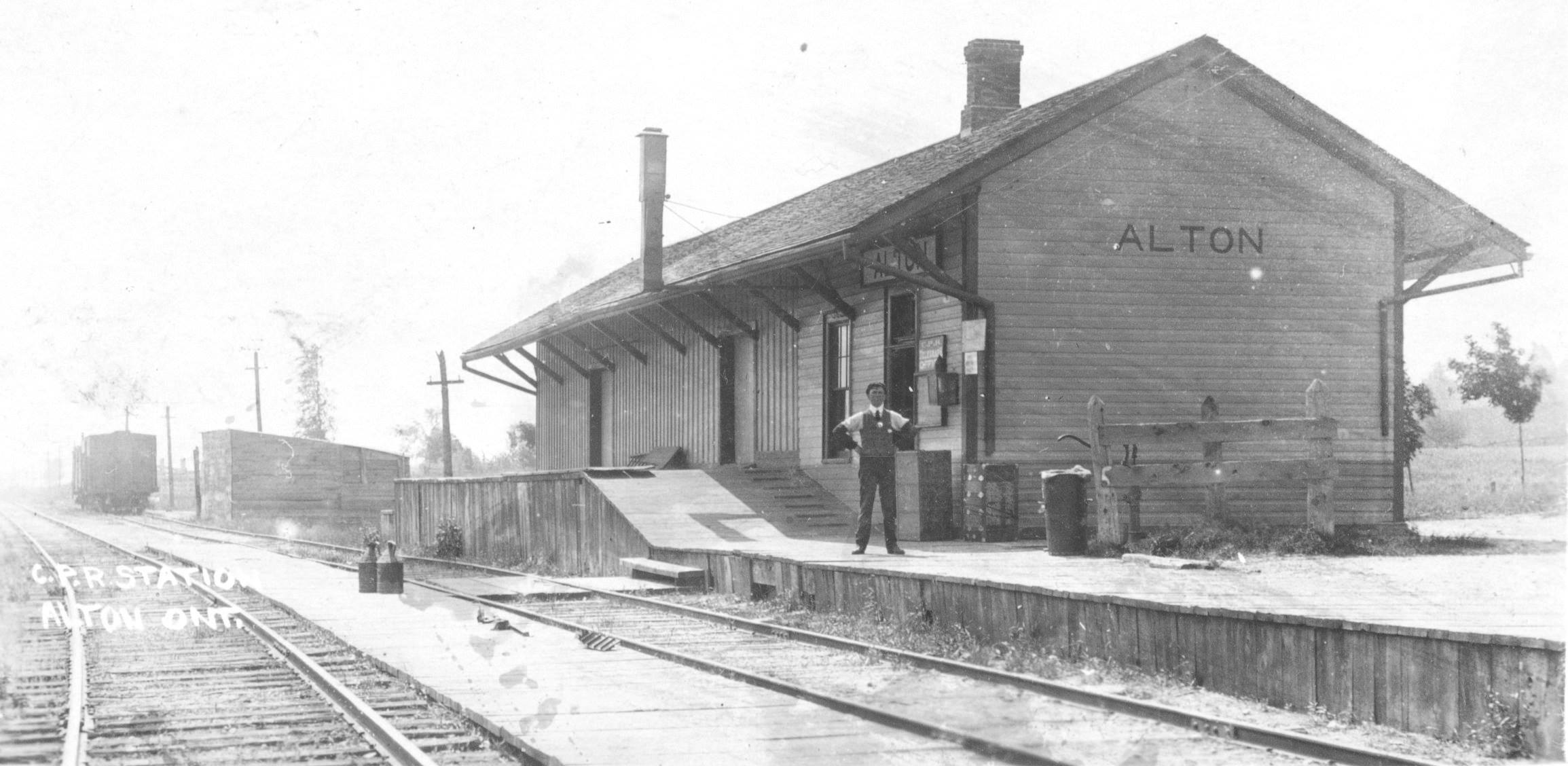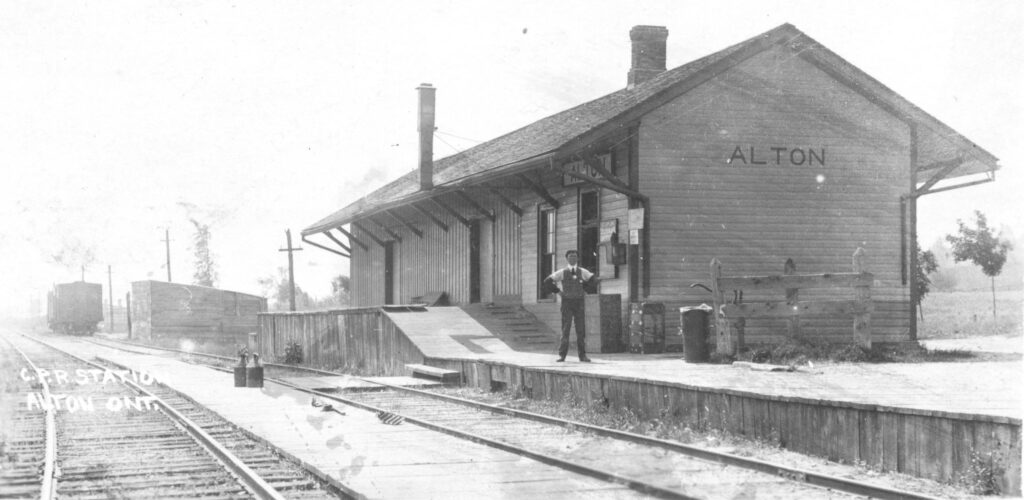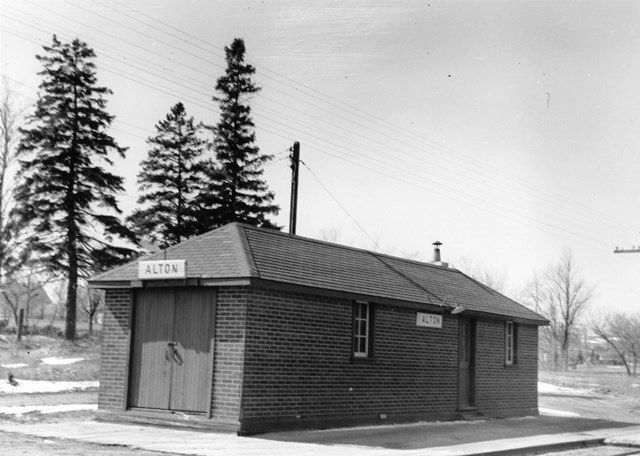Summary
Alton Station was built by the Credit Valley Railway in 1879 while its construction was progressing north towards Orangeville. It was beaten by the Toronto, Grey & Bruce Railway who completed their Alton Station eight years earlier, but the Credit Valley Railway had the advantage in building their station much closer to the village of Alton. It followed a standard design that was used extensively by the Credit Valley Railway elsewhere while it was under construction, but the one in Alton was by far the largest iteration of them. This was mostly due to a long freight room or baggage room extending from the south side of the building, possible as an alternative to having a separate freight shed. The north side of the building would have contained the waiting room and the station agent’s office. It was located on the south side of Station Street, which is still named as such today in spite of the apparent lack of a train station in the vicinity. The Canadian Pacific Railway gained control of the Credit Valley through one of its proxies, the Ontario & Quebec Railway, in 1883. Alton Station saw a total of four passenger trains per day that year, increasing to six per day by 1884.
The 1883 acquisition of the Credit Valley Railway by Canadian Pacific had similarly happened to the Toronto, Grey & Bruce the same year, meaning both train stations in Alton were now owned by the same company. The former Credit Valley station would remained the preferred one due to its convenient location, and in 1932 the former Toronto, Grey & Bruce line was abandoned altogether. Around the same time, the former Credit Valley station in Alton succumbed to fire and a replacement was built nearby. The new station was a tiny brick shelter representative of the hard economic times of the Great Depression. As automobiles started to appear during the early 20th century, branch line passenger ridership was one of the first things to feel the effects. Several old stagecoach routes in the area were turned into provincial highways in the 1920’s, allowing for a higher amount of car traffic at faster speeds than before. Service was reduced to five trains per day by 1954, rebounding back to six after the introduction of self-propelled Budd Rail Diesel Cars in 1954. Service increased even further by 1961 to seven trains per day once the vast majority of train consists had been converted to the Budd Cars, which were marketed as Dayliners and significantly more economical to operate. Ridership continued to drop in spite of these efforts, and passenger service was reduced significantly towards the end of the 1960’s. Service to Alton ended altogether in 1970, and the station was dismantled shortly thereafter.
Canadian Pacific continued to use the line for freight until 2000, when the line from Orangeville to Streetsville was bought by the Town of Orangeville to ensure service would remain to the town’s industries. It was contracted out to Cando Rail, a shortline operator based out of Manitoba. A tourist passenger excursion was established shortly after called the Credit Valley Explorer, bringing visitors from Orangeville to Snelgrove and back. Trillium Railway took over the contract in 2018, and the Credit Valley Explorer ceased to operate in February of that year. Freight service was terminated in December 2021 and the line was subsequently torn up with plans to turn it into a recreational trail.
Condensed Station Info:
| Location: | Served By: | Current State: | Date Built: | Date Demolished/Destroyed: |
| Near Station Street and Caledon Street | Credit Valley (1879 – 1883) Canadian Pacific (1883 – 1970) | Destroyed by fire (first) Demolished (second) | 1879 (First) 1930’s (Second) | 1930’s (First) 1970 (Second) |




